An integrated approach to the treatment of cervical osteochondrosis is aimed at reducing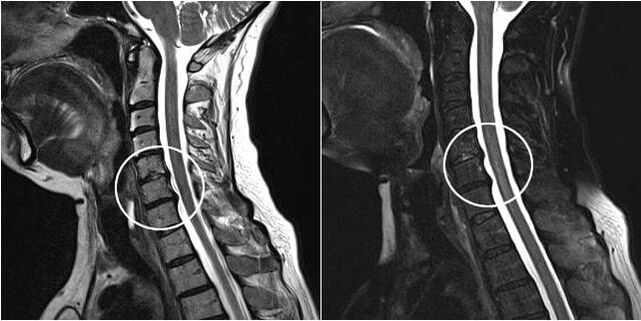 Severity of pain, hardness.Therapy uses drugs from various clinical and pharmacological groups, physiotherapy, classical and acupuncture massage, exercise therapy and acupuncture.If conservative treatment methods are ineffective, surgical operations are performed.
Severity of pain, hardness.Therapy uses drugs from various clinical and pharmacological groups, physiotherapy, classical and acupuncture massage, exercise therapy and acupuncture.If conservative treatment methods are ineffective, surgical operations are performed.
Symptoms of the disease
In the initial stage of development, osteochondrosis is asymptomatic.After staying with a bent head for a long time or intense physical activity, mild discomfort occurs at the back of the neck.The patient is in no hurry to see a doctor, making a mistake due to the consequences of muscle tension.The pathology progresses slowly but persistently.
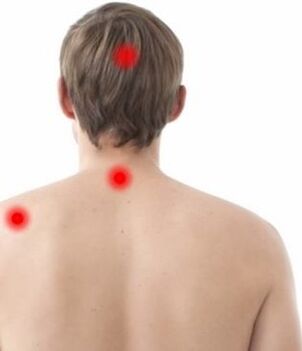
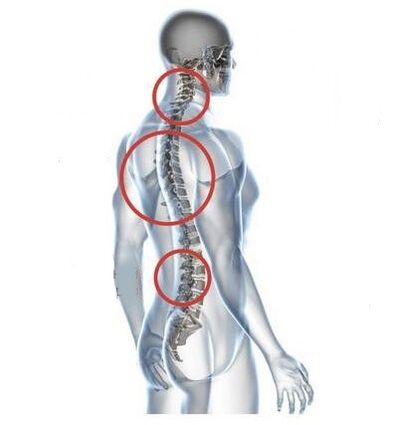
Discomfort in the neck gradually becomes more intense after heavy lifting, hypothermia or a change in weather, and is replaced by pain in the neck, a dull ache.Other specific symptoms of cervical osteochondrosis appear:
- click when tilting or turning the head;
- limited mobility in the cervical spine;
- during sharp, severe pains.
As the intervertebral discs and vertebrae deform, the patient's condition worsens.The course of osteochondrosis is complicated by non-venogenic symptoms caused by compression of the spinal roots and spinal artery by osteophytes or predatory protrusions.Headache, dizziness, changes in blood pressure appear, and visual and hearing acuity decreases.
Treatment methods for cervical osteochondrosis
There are no drugs that restore the vertebral structures.But it is quite possible to improve the patient's well-being and stop the spread of the disease.It is not enough to just take pills or apply ointment - you need to do physical therapy every day, visit the massage room and physiotherapeutic activities.
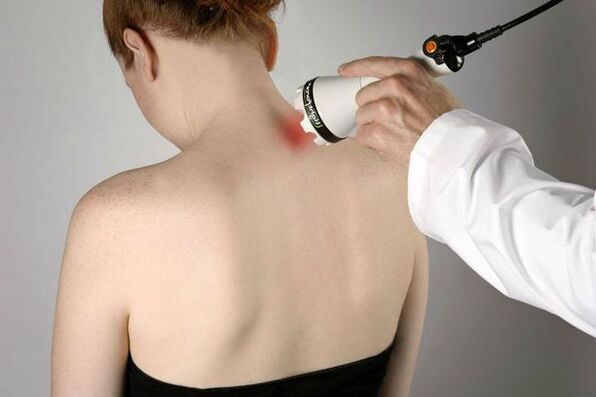
Drug therapy
Pharmacological drugs are used to relieve the symptoms of cervical osteochondrosis, including by improving blood circulation and partial recovery of intervertebral discs.Due to the lack of characteristic symptoms at the initial stage, patients turn to a vertologist or neurologist with a pathology of 2 or even 3 degrees of severity.Often they are already complications - intervertebral hernia, protrusion, vertebral artery syndrome.Therefore, doctors include not only analgesics in therapeutic regimens, but also improve innervation, repair skeletal muscles, and restore trophism.
NSAIDs
With osteochondrosis of 2-3 radiographic stages, patients complain of sharp, piercing pain that occurs when bending or turning the head.In such cases, they are prescribed non-steroidal anti-inflammatory drugs.Severe pain, intramuscular injection of solutions is used - Diclofenac, Meloxicam, Lornoxicam, Ketorolac.Medicines have not only analgesic, but also anti-inflammatory and anti-edematous effects.This is especially true when the soft tissues of the neck are injured by displacement or osteophytes.
If the pain is not very intense and occurs from time to time, then NSAIDS in tablets or capsules are used:
- Nimeulide;
- Ketorolac;
- Diclofenac;
- Celecoxib;
- Etoricoxib.
Systemic NSAIDS are highly toxic to the stomach because they increase the production of hydrochloric acid.To eliminate the possibility of damage to the mucosa, it is necessary to take Proton Pump Inhibitors together with NSAIDs.
Ointments and gels are used to relieve mild pain that bothers a patient with hypothermia or when the weather changes.Most often, treatment regimens include Diclofenac, Ketoprofen, Artrosilene, Piroxicam, Ibuprofen.
Hormones
Although the intramuscular administration of NSAIDS has the correct analgesic effect, hormonal agents are used - methylprednisolone, triamcinolone, betamethasone, dexamethasone.Glucocorticosteroids are characterized by pronounced analgesic, anti-inflammatory and anticonvulsant activity.Hormonal drugs are generally used for narcotic blockades along with anesthetics lidosine and procine.This method of drug administration ensures the preservation of the analgesic effect for several days and sometimes weeks.
However, glucocorticosteroids are not intended for frequent use.They are toxic to internal organs and damage cartilage, bones and ligamentous-tendon apparatus.Hormonal drugs also have an immunosuppressive effect, which negatively affects the immune system.
Anesthesia
Lidocaine and Novocaine (procine) are most often used in the treatment of cervical osteochondrosis for drug blockades.The latter is characterized by a pronounced analgesic effect and wide applications.Novocaine is prescribed to block the peripheral nerve and nerve ganglia in the treatment of degenerative-dystrophic pathologies.This is a violation of the spinal roots with osteophytes or herniated protrusions that cause acute pain.
Lidocaine is used only for blockades.It is one of the active ingredients in tolperisone injection solution, a muscle relaxant that relieves muscle spasms.Lidocaine is also included in preparations containing B vitamins.
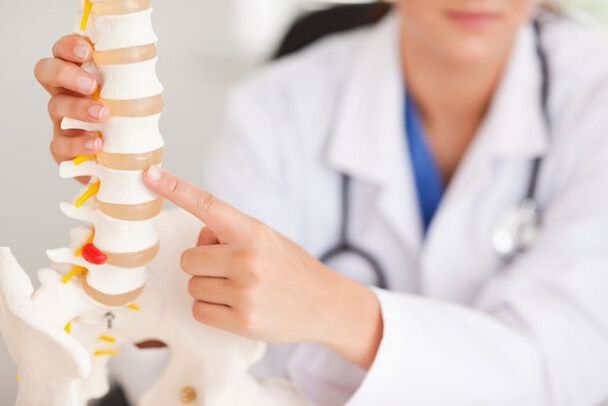
Local irritants
Ointments, gels, warming and local irritant effective balms are very often prescribed for the treatment of cervical osteochondrosis, but only in the absence of soft tissue inflammation.They may contain camphor, menthol, turpentine, red hot pepper extract, Nicoboxil, non-ivamide, snake or bee venom.These substances irritate the sensitive nerve endings in the subcutaneous tissue and relieve pain.
Such agents have a vasodilation effect, which is accompanied by a long, long-lasting feeling of heat.By improving blood supply to tissues with nutrients, their accelerated recovery occurs.
Local irritant drugs are often prescribed to patients to reduce the dose of systemic analgesics and reduce their pharmacological burden on the body.
Medicines to improve microcirculation
A means of improving blood circulation is used in the treatment of osteochondrosis of any location.But more is required especially for cervical pathology.In this part of the spine, the artery that supplies nutrients and oxygen to the brain is often compressed.The following drugs help restore blood supply:
- Xanthinol nicotate, which improves microcirculation, oxygenation, nutrition of cartilage tissue and all parts of the brain;
- Pentoxifylline, which reduces blood viscosity and aggregation of platelets and red blood cells, improves the revelic properties of blood (flowability);
- Aminophylline, which reduces the tension in the vascular walls and promotes the expansion of peripheral vessels.
Preparations containing thioxidic acid are often used to improve microcirculation.They have a vasolation effect, restore the activity of spinal roots, improve trophism and innervation.
Vitamin
To improve a person's well-being, strengthen the body's defenses and increase the reserves of substances necessary for tissue regeneration, patients are prescribed balanced complexes of vitamins and trace elements.It is enough to take one tablet of any medicine to eliminate the deficiency.
But drugs containing B vitamins are more often used in the treatment of cervical osteochondrosis.The composition of injection solutions includes anesthetic lidocaine, in addition to pyridoxine, thiamine, cyanocobalamin.B vitamins can also be prescribed in tablets.Their regular use helps to improve the transmission of nerve impulses and stimulate natural mechanisms aimed at recovery.
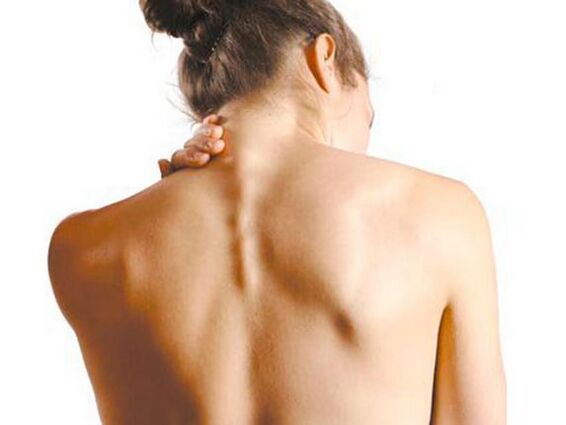
Chondroprotectors
This is the only drug group used for pathogenetic treatment of cervical osteochondrosis.At the initial stage of its pathological development, chondroprotectors are used for partial restoration of intervertebral discs.This effect can stimulate the synthesis of chondrotic and glucosamine proteoglycans, increase the production of hyaluronic acid, activate all functions of cartilage cells (chondrocytes) and prevent their premature destruction.
Chondroprotectors are also prescribed to patients with 2 and 3 osteochondrosis.At this stage, the cartilage tissue is no longer regenerated.Taking the drug in doses up to 800 mg prevents further destructive and degenerative changes.The duration of the therapeutic course is 3 months.After using the products for 2 weeks, it has an anti-inflammatory and analgesic effect.
Active ingredients of drugs with chondroprotective activity for the treatment of cervical osteochondrosis:
- Glucosamine sulfate or hydrochloride;
- Chondroitin sulfate;
- Glucosamine and chondroitin;
- Components of plant or animal origin.
Surgical intervention
Indications for surgical intervention, inefficiency of conservative treatment, as well as complications of cervical osteochondrosis, for example, myelopathy, vertebral artery syndrome and radicular syndrome.To decompress the spinal cord, blood vessels and spinal roots, the following operations:
- Laminectomy;
- Laminotomy;
- foraminotomy;
- Facetectomy;
- discectomy.
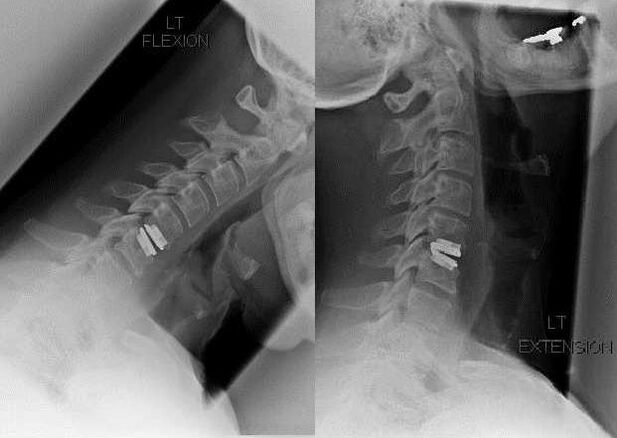
During surgery, bone fragments and ligaments can be resected, and intervertebral discs can be removed in whole or in part.For small herniated disc protrusions, laser ablation of the disc nucleus is often performed.
After extensibility of the lamellar structures, stabilization of the spinal motion segments is often required, with spinal fusion or placement of bone and dermal autografts.
Massage and self-massage
There are many types of these healing procedures, but cervical osteochondrosis, classic, acupressure, vacuum (including apparatus) and segmental massage are used more often.Mechanical movement on the back of the neck, shoulders, forearms and back allows to stimulate lymphatic drainage, eliminate venous congestion, strengthen muscles and relax skeletal muscles.Massage is used not only to treat the disease, but also to prevent its relapse.
It can be done by massaging yourself, squeezing the back of the neck for 10-15 minutes, rubbing, hitting, hitting.But it is better to buy special electrical devices in a pharmacy or medical equipment store - massagers equipped with comfortable long handles and speed controllers.
Therapy Complex
The doctor of physical therapy selects exercises for the patient individually, taking into account the severity of the pathology and the severity of the developed complications.One of the criteria is the frequency of neurological manifestations.Typically, the complex includes the following exercises:
- Interlace your fingers and place your palms on your forehead.By resisting due to tension in the neck muscles, trying to bend it back, press your head and hit your hand;
- Interlace your fingers and place your palms behind your head.Tap with your hand as you try to lower your head.At the same time, strain the muscles of the neck and shoulders, trying to maintain the original position of the head;
- Place the palm on your cheek.Try to bend your head to your shoulder, resisting with your hand.Repeat the exercise on the other side.
Regular exercise therapy is the most effective way to get rid of the symptoms of cervical osteochondrosis and prevent it from spreading to healthy vertebral structures.Daily training stimulates the strengthening of the muscle corset that stabilizes the discs and vertebrae.Nutrient reserves are replenished by improving blood circulation in the tissues.
Textbook therapy
Chiropractic always prepares the patient for the upcoming manipulations by starting the session with a relaxing massage.Then, using smooth movements, he stretches the muscles and relieves excess tension.As a result, muscle spasms cause increased pain when spinal roots are compressed.Compression of the vertebral artery is eliminated, along with neurological symptoms.Chiropractic adjusts the cervical vertebrae when necessary.This may be accompanied by a crackling, throbbing, clicking and an increase in the intensity of painful sensations.
One way to avoid surgery is to lengthen (traction) the distance between the spine and the damaged discs to increase the distance between the spinal organs.The procedure is performed by a chiropractor on special tables.But the most popular, underwater traction in bathtubs or pools.
Acupuncture
This is one of the types of reflexology recommended for patients to restore the mobility of cervical vertebral structures and improve blood circulation.In the session, very fine needles of different lengths made of steel, silver and gold are used.Biologically active points are located not only on the back of the neck, but also on the back, shoulders and forearms.
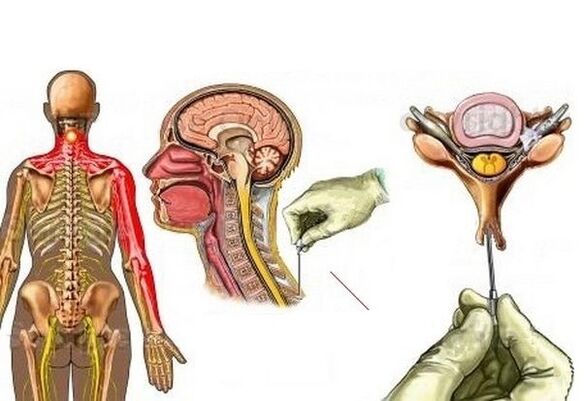
After the needles are placed, weak pain impulses begin to flow into the central nervous system.The body's response is to release bioactive substances with analgesic and anti-inflammatory effects into the systemic circulation.The production of endorphins significantly increases the patient's well-being.
Orthopedic treatment methods
From the first days of treatment, patients are recommended to wear orthopedic devices - Shants collars.It should be worn for several hours and removed before bedtime or during the day.Collar can be flexible with plastic or metal inserts, rigid or inflatable.Devices vary in height, degree of fixation and fastening design.The size of the collar for the patient is determined only by the vertebroad, taking into account the severity of the symptoms of osteochondrosis and the possibility of displacement of the vertebral structures.

Patients are recommended to buy an orthopedic mattress of medium hardness.When resting it, there is no deterioration in the blood circulation of bones, cartilage and soft tissues.Doctors also recommend sleeping on an orthopedic pillow with a special break for the head.
Folk remedies and recipes
Folk remedies are used after the main therapy and elimination of all symptoms.The feasibility and safety of home use should be discussed with your doctor.
Honey ointment
Place a tablespoon of aloe juice and lanolin in a mortar and grind until a homogeneous mass is formed.Add a teaspoon of gum turpentine, eucalyptus, pine, rosemary, a drop of 30 g of thick flower honey, a drop of essential oils, mix.Without stopping ruping, introduce 100 g of medical petroleum jelly in small portions.The ointment is applied to the skin of the neck when discomfort occurs.
Horseradish leaves
A large fresh leaf of horseradish is kneaded well, wrapped with thick honey and applied to the back of the neck.Secure the compress with a plastic wrap, a warm cloth, and a cause bandage.The duration of the procedure is 1-2 hours.
Other herbal compresses
In a mortar, fresh leaves of plantain, dandelion, burdock, sorrel and elecampane are based on a thick paste.Without stopping mixing, add a few drops of essential oil of juniper and thyme, a spoonful of almond cosmetic oil.Apply the mass to the back of the neck, compress it with a film and a medical bandage and leave it for an hour.
Ways to prevent the disease
Osteochondrosis is a recurrent degenerative pathology that occurs against the background of gradual destruction of intervertebral discs and gradual destruction of bone deformation.It is necessary to exclude the usual lifestyle factors that provoke the deterioration of cartilage tissue cubism.These are low physical activity, excess weight, excessive physical activity and a lack of food in the diet high in micronutrients and vitamins.

























